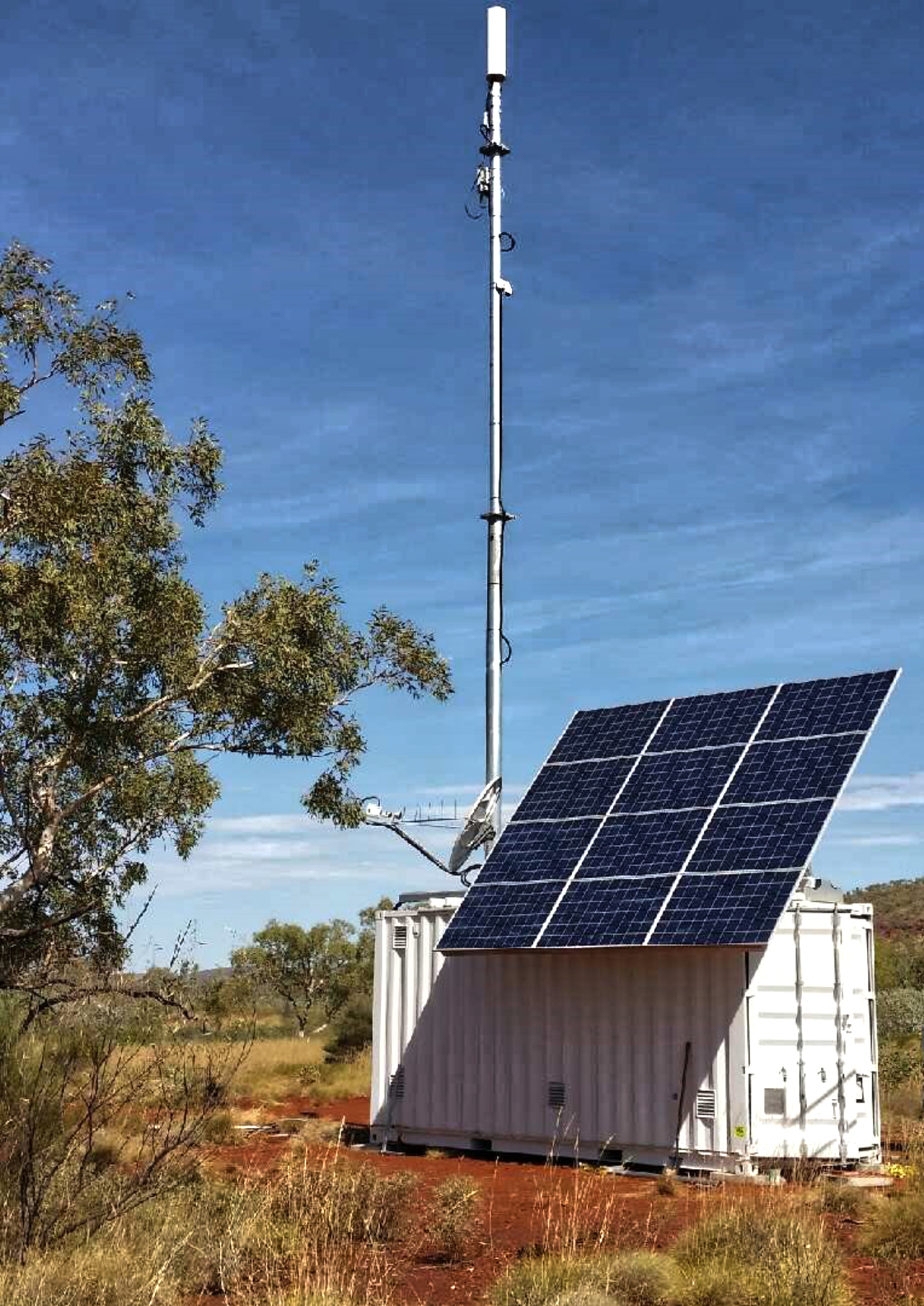Cellular Backhaul Over Satellite (CBH) The Promise Of Bridging The Digital Divide

The need to bridge the digital divide is now stronger than ever before and has been exasperated by the COVID-19 pandemic that has caused a significant rise in demand for connectivity and especially in the surge of demand on cellular networks.
We see a record need for video streaming and bandwidth hungry applications that are coming about due to work and study from home, social distancing that is increasing the reliance on communication from home, as well as additional connectivity requirements to support users during this global crisis.
As not everyone in the developing world can afford computers but do possess 4G smart phones, internet via those crucial devices backhauling over satellite is the fastest solution for bridging the digital divide. There is a need to reach underserved areas quickly with a satellite alternative to terrestrial networks that do not provide an adequate solution or are altogether nonexistent.
The adoption of cellular backhaul (CBH) over satellite has increased substantially over the past years and is expected to continue to do so, according to various industry analysts. In a recent report published by research firm NSR, CBH was singled out as the key vertical expected to drive growth in the satellite communications market.
Satellite backhauling has become an economically viable solution that can answer the strictest Service Level Agreements (SLAs), and for many Mobile Network Operators (MNOs), is no longer a niche play. In the past, the satellite option for CBH was often used only as a fallback for hard to reach rural areas, such as islands, mountains and deserts, where terrestrial infrastructure, such as fiber, next-generation copper or microwave, were either too expensive or unfeasible. Today, Gilat sees that the increasing need for high-throughput data networks together with improved economics and advancements in technology, in both satellite capacity and the ground segment, are causing MNOs to rethink old habits.
Furthermore, the advantages of satellite communication are particularly relevant during this pandemic, due to record-time deployment as well as being able to reach anyone, anywhere. In addition, MNOs are increasingly focused on their core business and outsourcing non-core competencies, thereby opening the opportunity for satellite communication as a managed service.
Gilat is recognized as the world leader in CBH over satellite, reaching 44 percent market-share in modem shipments according to a report by industry analyst NSR in 2020. Gilat, with its SkyEdge II-c platform and Capricorn family of VSATs, has deployments of large networks worldwide that consist of tens of thousands of sites that are being connected with satellite backhaul, providing a major impact in narrowing the digital divide and promoting equal opportunity.
Additionally, these network extensions over satellite are a significant source of revenue generation to the MNOs, indicating that, indeed, satellite backhaul has moved into the mainstream.
Dispelling the Myths About CBH Over Satellite
While the business case for satellite backhaul has never been stronger, there still remains one major barrier to widespread deployment, and that is — perception. Common, negative misperceptions of satellite backhaul revolve around three myths: inadequate performance, high cost and unmanageable complexity. One of the main reasons for these misperceptions is a lack of familiarity with satellite technology. Often, decision makers are unaware of the recent innovations in satellite technology, leading to their apprehension about its suitability for cellular backhaul.
The best way to alleviate these false impressions is to examine the common myths one by one.
=> Myth 1
4G/5G Performance Cannot be Met with Satellite Backhaul
With the large amounts of required data communication, MNOs raise concerns that VSATs are not able to deliver the required LTE performance to the handset and will not be able to support the high throughput required for the 5G network architecture. In addition, as satellite communication has an inherent delay, In addition, as satellite communication has an inherent delay, a concern is raised that this will result in poor backhaul performance and consequentially a poor user experience.
=> Fact
Acceleration Technology and High-Performance Modems Mitigates Latency Effects
The inherent satellite delay can be overcome by using acceleration technology that addresses the latency effects. Mitigating the latency effect, makes it possible to achieve high throughput which requires high performance modems to accommodate the traffic and provide the required high-quality user-experience. Such a solution is especially critical when high bandwidth is required, like in 4G/5G deployments.
An outstanding solution was jointly developed and patented by Gilat and SoftBank. The innovative technology enables true high speeds, through acceleration of traffic inside the GTP tunnel. This acceleration technique has been embedded in Gilat’s Capricorn VSAT and was implemented initially in Japan.
Now this achievement of enabling true LTE performance is deployed in Tier-1 mobile networks around the globe including in North America, South America, Asia, Europe and Australia. Furthermore, this acceleration technique and the Gilat 5G ready system architecture, in combination with high throughput VSATs, allow operators to start deploying 5G Standalone (SA) and Non-Standalone Architecture (NSA) networks over satellite.

In addition, as the satellite industry evolves to Non-Geostationary Satellite (NGSO) constellations, the satellite latency concern is further mitigated with medium and low orbit (MEO/LEO) constellations, significantly reducing the satellite distance from the earth.
=> Myth 2
Satellite Connectivity is Expensive
In the past, the cost of satellite bandwidth capacity and management of the satellite backhaul often caused satellite-based communications to be prohibitively expensive for providers of broadband services, such as MNOs.
=> Fact
Satellite Capacity Pricing at Times Rivals Terrestrial Bandwidth Costs
With the continued launch of High Throughput Satellites (HTS) and Very HTS (VHTS) satellites, as well as the promise of NGSO constellations, industry analysts are expecting a further decline in bandwidth prices due to the abundance of satellite capacity, propelling satellite solutions into the mainstream. Based on these trends, it is expected the cost for satellite backhaul networks will compete with those of terrestrial backhaul networks for many use cases.
=> Fact
Bandwidth Sharing for Efficient Resource Allocation Reduces Cost Even Further
Gilat implements access schemes such as TDM/TDMA that do not waste bandwidth when not needed and provide sufficient capacity to meet peak usage. Gilat’s SkyEdge II-c platform ensures that bandwidth is adjusted according to usage, for better cost efficiency.
=> Myth 3
Satellite Connectivity is Too Complex
A third common misperception is that satellite technology is too complex for cellular backhaul networks. MNOs already have their hands full with their rapidly evolving mobile networks, and the last thing they want is added complexity for back haul.
=>Fact
Accelerated Layer-2 Support Facilitates Satellite Network Integration
A factor contributing to satellite backhaul complexity relates to the OSI network layer, which is where the integration of the satellite and terrestrial cellular networks occurs. Satellite networks traditionally operate at Layer-3 (network layer) to be able to accelerate the user data, while MNO networks, in some cases, operate at Layer-2 (data link layer). Gilat’s SkyEdge II-c has the advantage of supporting accelerated data while operating at a carrier-grade Layer-2, thus easing MNOs satellite integration while extending traditional terrestrial networks.
=> Fact
Global Network Management Reduces Complexity
Another way to reduce satellite backhaul complexity is to use a sophisticated global network management system (NMS). Gilat’s TotalNMS enables full provisioning, configuration, control and monitoring of all satellite hub elements, as well as remote terminals, regardless of their physical location. This is crucial for streamlining the management, allowing MNOs easily and cost-effectively scale to support any network size and enabling them to start small and add sites as needed.
=> Fact
Managed Service Reduces Costs
Significant savings in cost can be achieved by regarding satellite backhaul as a managed service. The MNO specifies the requirements, the SLA and key performance indicators, as well as the required site locations and the schedule. Considering the managed service as a black box and giving end-to-end responsibility to Gilat, enables the MNO to focus on their core competency and promote their business.
To conclude, these presented facts dispel the myths:
• As satellite technology has evolved to deliver speed, performance and terrestrial-grade user experience, inadequate performance is negated.
• Today’s satellite TCO rivals’ terrestrial solutions, in many cases, resulting in high costs dispelled.
• Since comprehensive suites of services simplify deployment, integration and operation, unmanageable complexity is dispelled.


